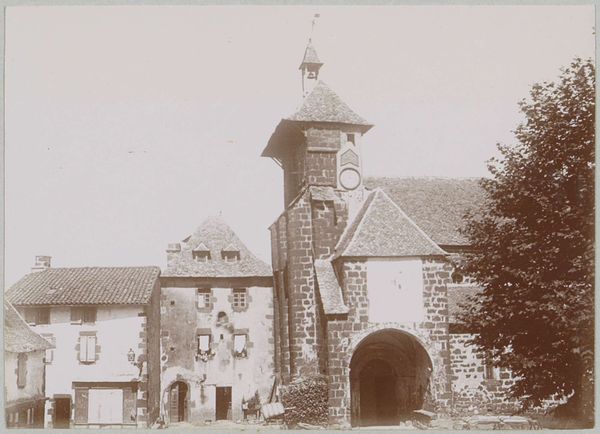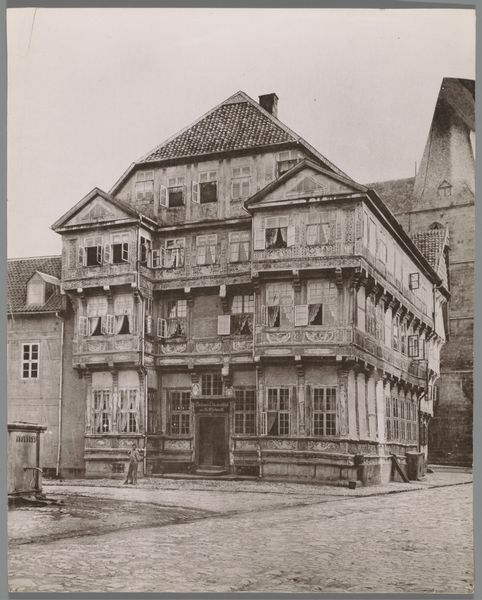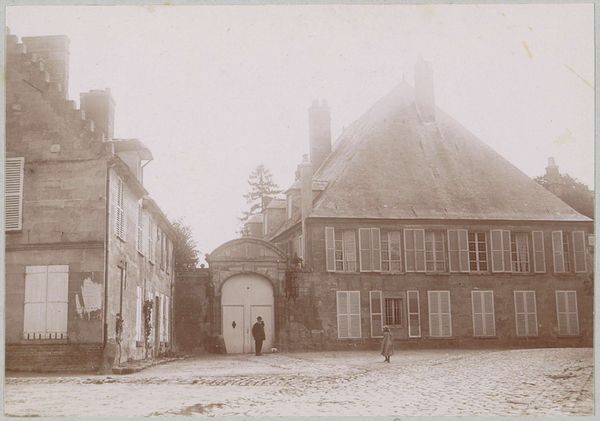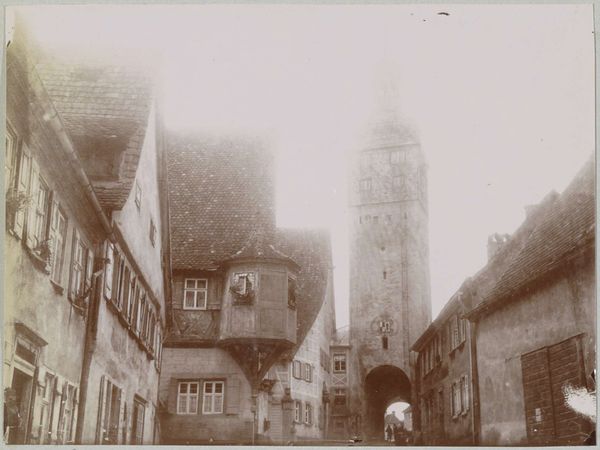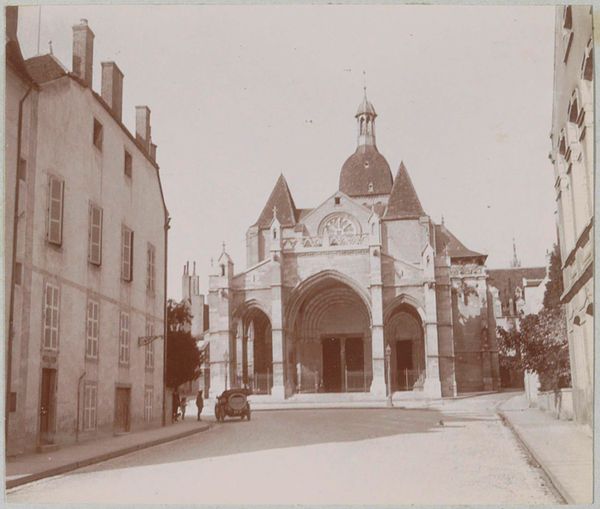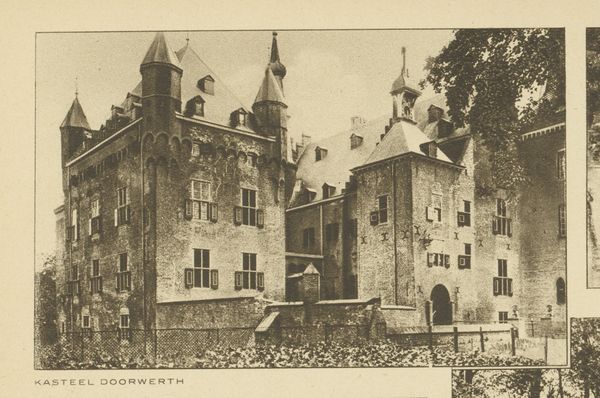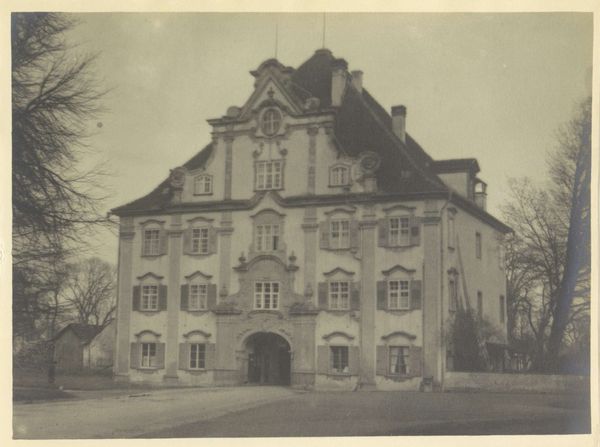
photography, site-specific, architecture
#
pictorialism
#
landscape
#
historic architecture
#
photography
#
site-specific
#
architecture
Dimensions: 10 5/8 x 8 3/16 in. (26.99 x 20.8 cm) (image, sheet)19 5/8 x 13 3/8 in. (49.85 x 33.97 cm) (mount)
Copyright: No Copyright - United States
Editor: We're looking at Frederick H. Evans' "Chateau D'Or- Inner Court," a photograph taken around 1900. It feels almost dreamlike, with the soft focus and muted tones creating a very ethereal quality around this grand building. What do you see in this piece, and how does it fit into the art world at the time? Curator: It’s a fascinating example of pictorialism, where photography emulated painting to gain artistic recognition. Evans wasn't just documenting architecture; he was creating an atmosphere, an idealised vision of the past. The question, then, is: why did images of grand historical architectures gain importance? And to whom does it appeal? Editor: So it's less about historical accuracy and more about conveying a feeling? I see how the soft focus might appeal, it gives the chateau an aged look as though history has been unkind. Curator: Precisely. Think about the context. Around 1900, anxieties about rapid industrialization and social change were growing. Images like these, carefully constructed and deliberately evocative, offered a nostalgic escape. They affirmed existing social hierarchies by reminding viewers of the power and permanence of established elites. Does that make sense? Editor: That makes perfect sense. So this wasn’t just about aesthetics; it was about reinforcing social power. And the location, being a "chateau," becomes symbolic of the past's prominence, literally immortalized in visual space. It's interesting to consider the purpose of "beauty". Curator: Indeed. Evans aestheticized the architecture, which, when hung on the walls of newly built museums and private residences, lent legitimacy to the contemporary upper class. We've looked at how photography not only represents reality, but actively shapes cultural values and power structures. Editor: That's fascinating. I never thought about a photograph being part of active political dialogue and discourse at the time! I'll definitely view art in museums differently from now on.
Comments
No comments
Be the first to comment and join the conversation on the ultimate creative platform.
